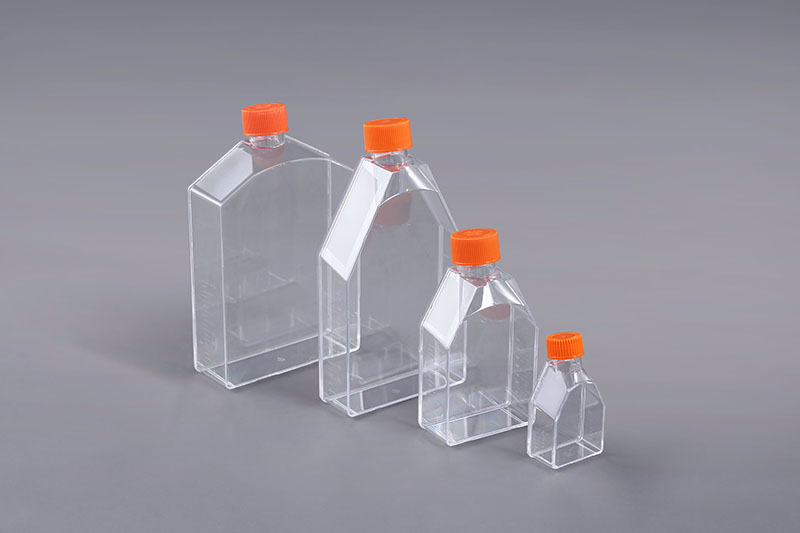Lysogenic bacteria refer to bacteria that have prophages integrated on their chromosomes and can grow and reproduce normally without being lysed. Mild bacteriophages have been widely used in the fields of transduction, genetic engineering vectors, and molecular biology. The cell culture flask can be used to check the lysogenicity of bacteria. The specific operation method is as follows:
1. Culture of lysogenic bacteria: Inoculate E. coli 225 (λ) activated by the LB slope into a 250ml cell culture flask containing 20ml LB culture solution, culture with shaking at 30°C for 16 hours, and then take 2ml bacterial suspension from it and connect it to another In a 250ml Erlenmeyer flask containing 20ml of LB broth, culture with shaking at 37°C for 2h to logarithmic phase.
2. Exclude free phage: If the strain to be tested is Bacillus, it can be made into a spore suspension, and then treated at 80°C for 10 minutes to kill the phage that may be adsorbed and free on the surface of the lysogenic bacteria; if the strain to be tested is non-Bacillus , Use antiserum prepared by phage or 0.2% sodium citrate solution to wash log phase lysogen cells to remove surface-adsorbed and free phage. After centrifugation at 4000r/min for 10 minutes, the supernatant can be added with sensitive indicator bacteria for double-layer plate determination, which is used to test the free phage of the sample and the phage that adsorbs the lysogenic bacteria. The phage after centrifugation The cells are induced.
3. Induction of lysogenic bacteria: the bacteria collected after centrifugation are washed twice with sterile normal saline, and made into a final concentration of 1011 cells/ml with normal saline or 100mmol/l Tris-HCL buffer (pH7.0) For bacterial suspension, add 5ml of bacterial suspension to each dish, irradiate with a 30W UV lamp at a distance of 30cm for 30s, immediately add 5ml of double-concentration LB culture solution, mix well and incubate in the dark at 37°C for 2h.
4. Inspection of lysogenic strains: Operate according to the double-layer agar method, add a few drops of chloroform to the above induced lysate, and dilute appropriately with the 10-fold dilution method. After selecting the three dilutions of the dilution, take 0.3ml for each dilution. Mix well with 0.2ml of logarithmic phase sensitive E. coli 226 bacteria suspension, then add LB half-body medium that has been melted and cooled to 45°C, mix immediately, and then pour it onto the LB solid medium plate. After solidification, 37 Incubate at ℃ for 6h and observe. If a large number of plaques appear on the cultured plate, it proves that the tested strain is a lysogen.
To check whether the bacteria have lysogenicity, follow the above steps. Pay attention to the sterility of the process during operation to avoid improper operation that affects the test results.
The FAI climbed 5.9 percent year-on-year in the first 11 months of 2018, quickening from the 5.7-percent growth in Jan-Oct, the National Bureau of Statistics (NBS) said Friday in an online statement.
The key indicator of investment, dubbed a major growth driver, hit the bottom in August and has since started to rebound steadily.
In the face of emerging economic challenges home and abroad, China has stepped up efforts to stabilize investment, in particular rolling out measures to motivate private investors and channel funds into infrastructure.
Friday's data showed private investment, accounting for more than 60 percent of the total FAI, expanded by a brisk 8.7 percent.
NBS spokesperson Mao Shengyong said funds into weak economic links registered rapid increases as investment in environmental protection and agriculture jumped 42 percent and 12.5 percent respectively, much faster than the average.
In breakdown, investment in high-tech and equipment manufacturing remained vigorous with 16.1-percent and 11.6-percent increases respectively in the first 11 months. Infrastructure investment gained 3.7 percent, staying flat. Investment in property development rose 9.7 percent, also unchanged.
 English
English



















































